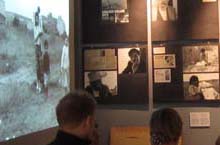Introduction
This project is like Russian babushka dolls: a documentary film and an exhibition in 1972 is circumscribed by a meeting with political discussion, which is circumscribed by a new exhibition focused on ‘Becoming a Copenhagener’ at the Museum of Copenhagen 2010.
This is a story of immigrants, rejection, acceptance: Amager Common and the Romani.
In 1972 sixtynine Romani were allowed to settle on Amager Common. The group came from Poland via Norway. After they were given residence permission, there followed a number of debates about how and to what extent the Romani and thiry way of life could be integrated into Danish society. Finally, the Romnia were granted asylum and live today in Helsingør.
At the Museum of Copenhagen a new exhibition has opened titled ‘Becoming a Copenhagener’. The museum introduced the thematic exhibition in this way:
The special exhibition focuses on immigration to Copenhagen, as the catalyst of, and pre-condition for, the town's growth and change. The physical traces left by the citizens of Copenhagen in former times, the urbanisation process and immigration are particularly interesting. Immigration is, and always has been, an important factor in the history of the capital. Not just as a curious feature in the life of the town, but rather as a key ingredient in the town's growth and development. While Copenhagen probably would not exist today had it not been for the continuous stream of immigrants that contributed to its development down through history, it most definitely would not have become the metropolis with which we are familiar with today without their contribution.*
It is in this context that the theme ‘Wanted-unwanted’ is presented and here is the second babushka doll as is can be seen in this photo:
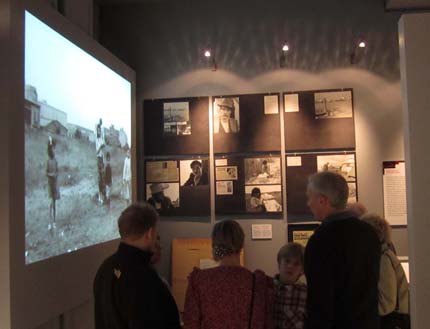
To the left on the wall is shown a five minutes extract from the film »Amager Common 1972«.
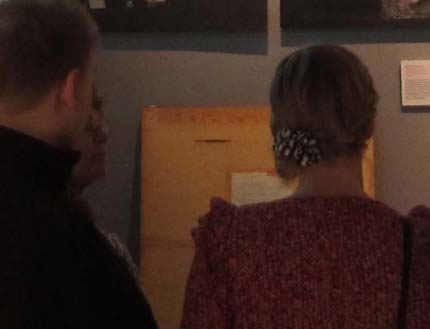
In the middle of the photo hang six black chipboards with black and white photographs and typed text and photocopies of newspaper articles.
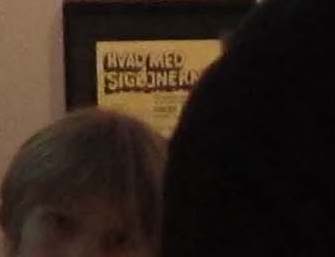
In the middle of the photo behind the boy's head, a corner of a yellow poster (in A4 format) is visible. It is the poster for the political meeting and panel debate in the National Museum of Denmark.
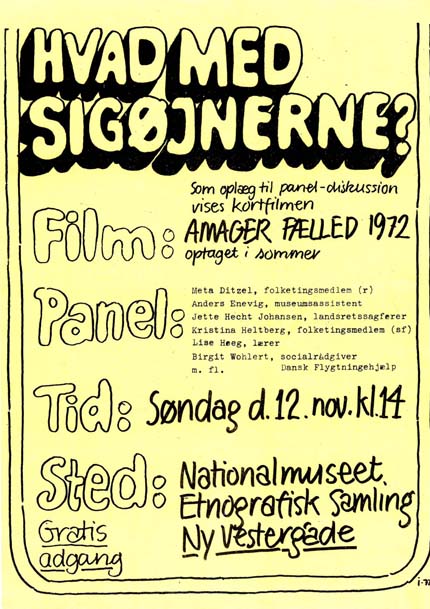
This is strange: the activist group of four young people (20 to 27 years old) working closely, very closely together in all the aspects of documentary film production, emphasising their enthusiasm and engagement in this applied film and exhibition – is now on display here in the museum nearly forty years after the event.
In the context of the museum exhibit three important aspects of the story about the 69 Romani or gipsies appear. First there is the concrete story of rejection and later acceptance of the group of Romani in 1972. This was the whole reason why the three young men and one woman engaged in the problem and in the process of filmmaking, exhibiting and discussion.
Secondly there is exactly this thinking in common civic duty to take care of the people who need help and support to be treated as citizens.
Thirdly there are the media products as they appear in the film and in the exhibition as text and visual appearance in an argumentative manner and the way of talking and creating a discourse of the time in the seventies.
And then this installation of the diverse media in this context nowadays reflects the seventies but also interfere with the discourse and attitudes in the Danish society today.
|
